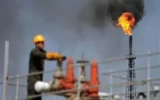
After a long period of stagnation and uncertainty over the fate of the Kish gas field development plan, new news is now reporting progress in drilling in the field and the completion of the ninth well; an event that coincides with rumors of the field being transferred to Persian Gulf Holding and has also raised speculation about the role of Touraj Dehghani, CEO of Pars Oil and Gas. Is the Kish gas field on the verge of a high-profile transfer to the petrochemical sector?

The CEO of the National Iranian Gas Company issued separate orders appointing the main, technical, and alternate members of the National Iranian Gas Company's contractual dispute resolution board.

The head of the South Pars Gas Complex Site 2 deputy announced the implementation of extensive programs to increase production, improve operational flexibility, reduce flaring, and improve employee accommodation infrastructure, and said: "With the measures taken, the complex's safe and sustainable production will be guaranteed next winter."

In 1403, the National Iranian Oil Company demonstrated a brilliant record in the gas sector by setting a record of producing 1 billion and 114 million cubic meters of gas in one day.

Khuzestan, the CEO of the Persian Gulf Bidboland Refinery Company, announced 71 percent progress in the company's projects in the field of collecting flare gases.

The executor of the Yadavaran Oil Field Development Project announced an increase in the volume of gas sent to the NGL 3200 project.

The Iraqi Prime Minister's advisor announced that the United States has maintained an exemption from sanctions on Baghdad's purchase of Iranian gas.

Gas production in the country's gas refineries and the quality of gas delivered to various consumer sectors comply with strict international standards.

The Secretary General of GECF said: "Natural gas is not just a bridge to the future, but an integral part of it, and demand for this energy carrier is expected to increase by 32% by 2050."

Gas consumption in the domestic, commercial, and industrial sectors is over 550 million cubic meters, accounting for 65 percent of the total gas delivered to the national network.










